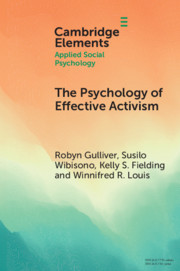Element contents
The Psychology of Effective Activism
Published online by Cambridge University Press: 15 July 2021
Summary
- Type
- Element
- Information
- Online ISBN: 9781108975476Publisher: Cambridge University PressPrint publication: 12 August 2021
References
- 26
- Cited by

